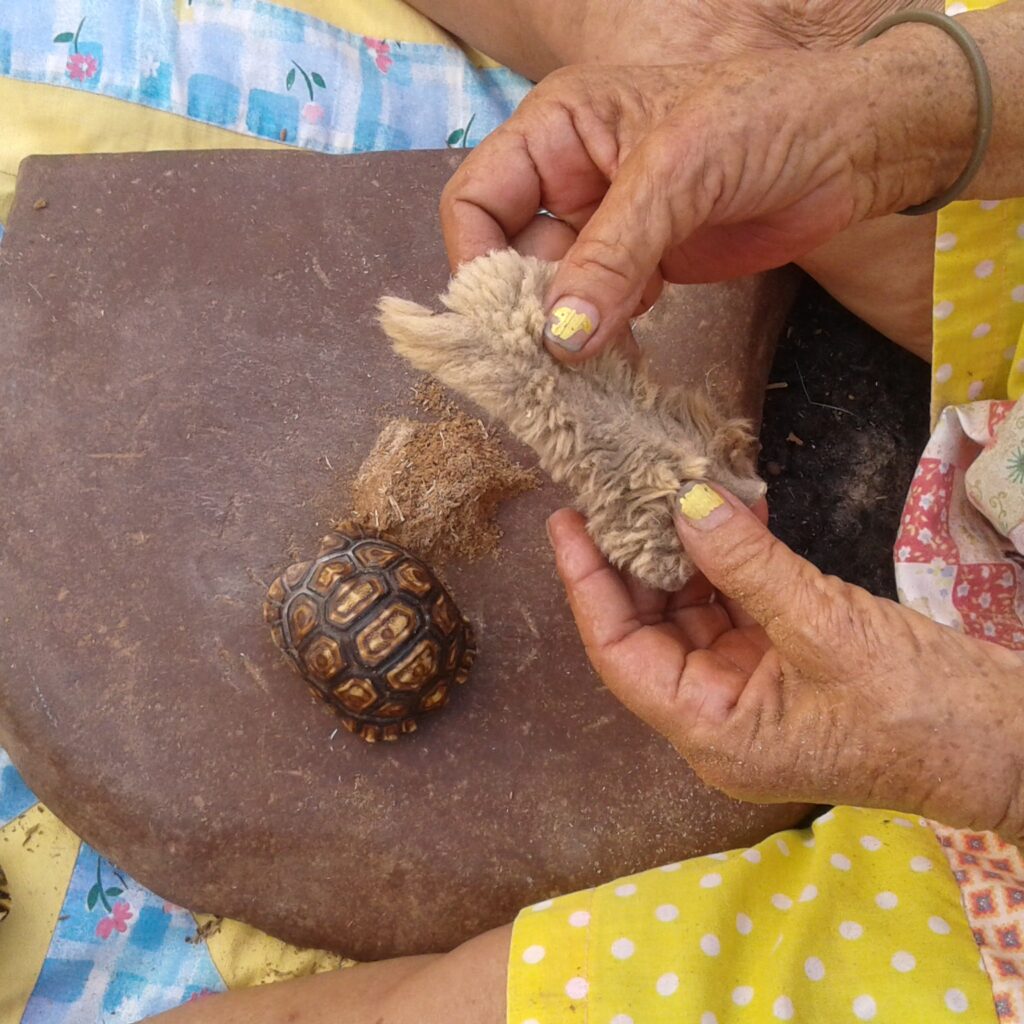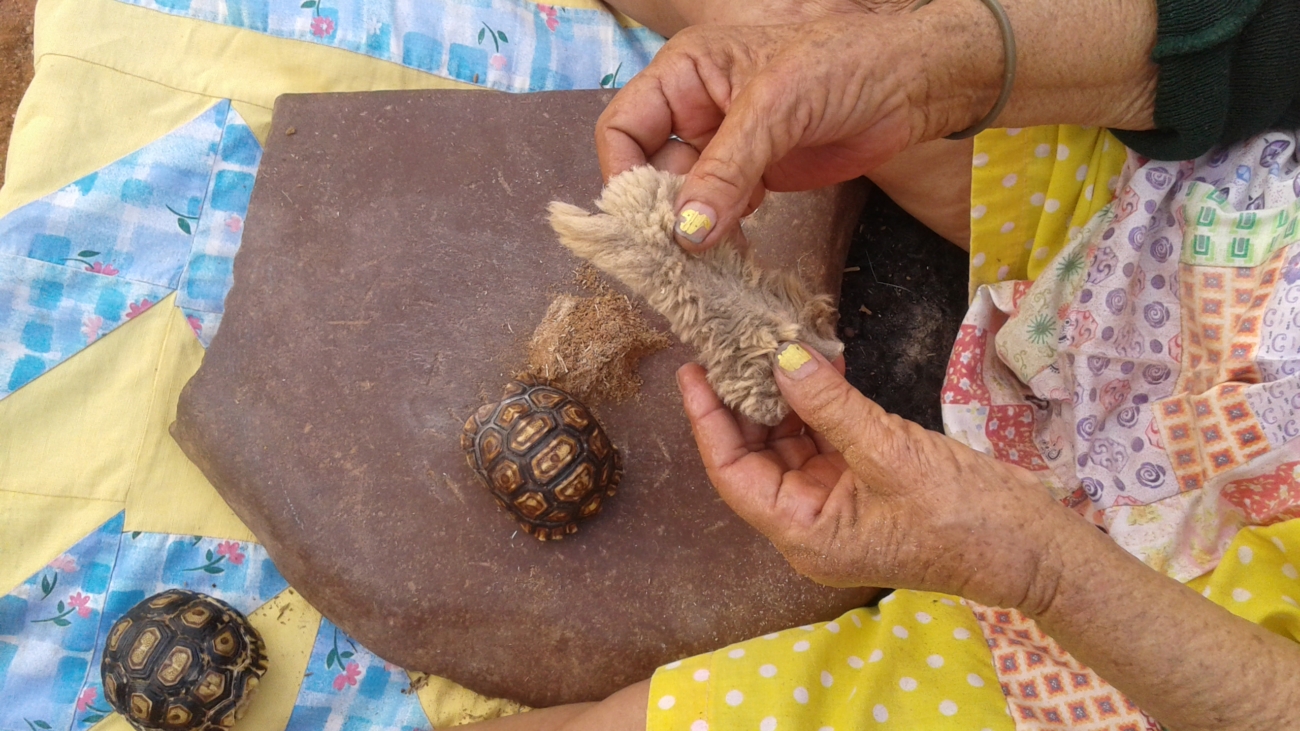Some of the plants that are used to make Sâi are #Gaesâ, /Ûtsib and !ôasâ. Women collect small branches from the field when they are completely dry. One can then remove the inside part of the #Gaesâ branch as that part is the one that is used to make Sâi. #Gaesâ plant can be easily identified as its branches usually grow flat on the ground and it produces yellow flowers.
Sâi is a perfumed powder made from plants used mainly by women. The powder can be prepared differently from a variety of different plants. Plants can also be mixed together to give to a good smell that is used by women in different ways.

Once the plants are collected from the field, and they are all completely dry, they can be mixed together, crushed and grinded on a flat stone. After grinding, one can sieve to remove the coarse particles from the powder. The powder is then stored in a tortoise shell, sealed on one end with the animal glands. The shell is then covered with a piece of a soft goat skin or fur.

Sâi is valuable and is one of the main traditions inherited from the ancestors. It is having a very good smell and it does not lose its quality even when kept for long. Its smell reveals the person’s identity once applied on the underwear, shawl and in the bed sheet. Some women use to make enough Sâi for income or to share with friends, this is however no longer happening as the plants are also now scarce. This powder was the only fragrance used by women in the olden days. Due to the fact that there are more other products easily available nowadays, only few elders are still using Sâi.
Sâi is mainly done by women but some men especially our Chief Hanse is interested in preserving this knowledge and practice. The elders and their offspring still have an interest to use this powder however the young generation has no interest in using Sâi. There are also implications in making Sâi nowadays as some there are Government regulations that is protecting the plants and one might get into trouble if found picking the plants without the permit.
Ms. Trooi Hanse indicated that, this cultural heritage can be preserved by showing and teaching young girls about these plants and their uses. One can also give them the tortoise shells as inheritance. These shells once used keeps the fragrance even when they are empty. The good smell in the shell will probably act as an encouragement for the people to continue with the practice.

This knowledge has been passed on through observation and practice. Ms. Trooi Hanse narrated that, she was taught to prepare Sâi during her transition to adulthood ritual. When she got her first periods, the elders would keep her in a dark room and wake her up early in the morning with the instruction that “the stone must make a sound”, meaning she should start crushing and grind to make the powder. That was part of the ritual requirement meant to instil discipline on a girl child.
To preserve this knowledge, girls should be encouraged to use this powder. Children need to see and hear about their cultural heritage as this knowledge is valuable in the Nama culture. We have lost many things including land, things which belonged to us are no longer accessible and that is a huge loss to us, Says Ms. Hanse.

